News
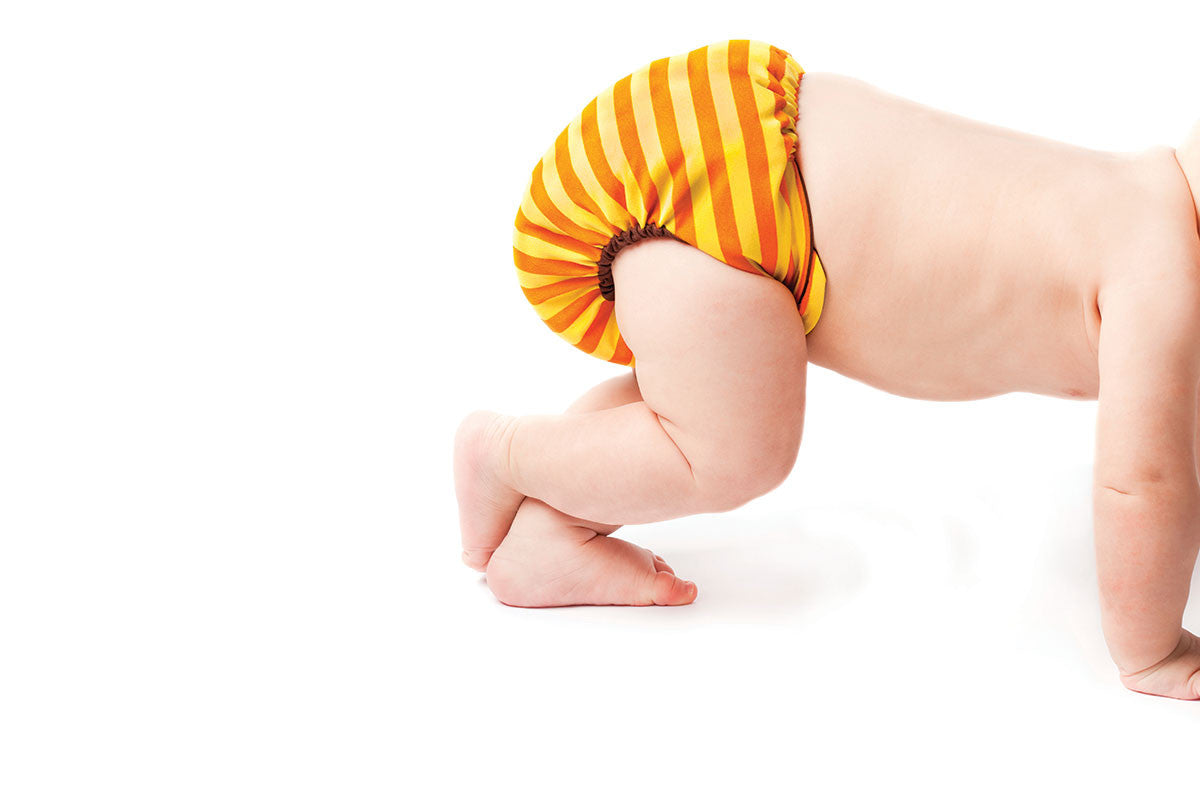
The Various Cloth Diaper Options, Compared
When you first begin your cloth diapering journey, you may find yourself feeling overwhelmed by the numerous available. You may wonder about the differences between various types of diapers, and the pros and cons of each. After all, this information would be helpful to have when deciding which kind of diaper will work best for your family.
In this article we will be discussing the various types of diapers and the reasons a person might choose one over the other.
— Flats—
The most basic of the diaper options, flat diapers are also the most versatile. They are a simple, square piece of fabric that can be folded in a number of different ways in order to improve absorbency in places you need it the most. These diapers can be unfolded into a single layer for easy, thorough cleaning.
Flat diapers can be worn alone and fastened with a diaper pin or a nifty little gadget called a Snappi. However, because flat diapers do not have elastic or built-in covers, it’s usually a better idea to wear them with a cover of some sort—which we will cover later in the article—in order to avoid leakage.
Pros: versatile; easy to clean well; inexpensive
Cons: generally require a cover on top; require folding before use
— Pre-Folds —
Pre-folds are also fairly basic, but instead of coming as one flat piece of fabric, they are a bit thicker, with extra layers in the middle section to help improve absorbency. Many people prefer pre-folds over flats because of these extra layers.
Like flat diapers, pre-folds can also be folded and used in a variety of ways, and can be pinned into place or used with a cover. Also like flats, pre-folds do not have elastic or any kind of waterproof covering, so it’s recommended that pre-folds be used with a cover, especially if you will be going out.
Pros: versatile; extra absorbent in the middle section; inexpensive
Cons: generally require a cover on top; require folding before use
— Fitted —
Yet another diaper that requires a separate cover (unless you want to risk leaks), fitteds look the most like a disposable diaper, and include leg elastic and sometimes even fasteners on the front. These are very straightforward and easy to learn to use, but they are also the most expensive of the diapers requiring covers. Fitteds are very absorbent though, and the best option by far for heavy wetters and nighttime diapers.
Pros: easy to use; absorbent
Cons: more expensive; generally require a cover on top
— PUL (Polyurethane Laminate) Covers —
Covers that are used over flat or pre-fold diapers. PUL covers are made from fabric covered in a thin layer of polyurethane. This makes the fabric waterproof, while still retaining its original flexibility.
Unfortunately, high temperatures can cause the waterproof layer to melt away, leaving the covers unusable. These covers include elastic in the legs and often at the waist of the diaper to help contain messes, and come with hook-and-loop or snap fasteners for ease of use.
Pros: can be inexpensive; contain messes well; hook-and-loop fasteners are simple to adjust; snap fasteners last for ages; can be reused after pee-only diaper changes
Cons: delamination can occur and cause leaks; leg elastic can be too tight and cause irritation
— Wool Covers —
Just like PUL covers, wool covers are used to cover pre-fold and flat diapers and help contain messes. However, these covers are made with wool instead of polyurethane laminate.
While wool is much more difficult to care for properly, it is more breathable and less likely to cause irritation. These covers come in a variety of styles including pants, shorts, pull-up covers, wraps, and even skirts. With wool covers, you really don't even need to put additional bottoms on your baby.
Pros: great at keeping baby dry; breathable
Cons: more expensive; difficult to care for
— Pocket Diapers —
Perhaps the most popular cloth diaper design out there, pocket diapers offer the most balanced blend of customizability, ease of use, and affordability.
Pocket diapers are made up of two parts: a shell—which is essentially a PUL cover with a pocket on the inside—and absorbent inserts. The shell takes care of containing messes with a waterproof fabric, leg elastic, and fasteners. Meanwhile, the inserts take charge in the absorbency department. Inserts can be made out of a variety of materials including (but not limited to) bamboo and microfiber, and can be doubled or tripled up for extra absorbency depending on your baby’s needs.
Pros: easy to use; customizable for better absorbency; relatively inexpensive
Cons: requires prepping before use; shell can delaminate
— All-in-One Diapers —
All-in-one diapers are by far the simplest cloth diapers to use. These are ideal to send to daycare or hand over to hesitant grandparents, due to their ease of use.
All-in-ones look almost identical to disposable diapers. They include a built-in absorbency layer, waterproof PUL shell, leg and waist elastic, and snap or hook-and-loop fasteners on the front. However, these are also the most expensive diapers on the market, and can often be difficult to clean thoroughly due to the many layers involved and the inability to deconstruct the diaper.
Pros: easy to use; everything in one piece
Cons: much more expensive; can be more difficult to clean; shell can delaminate
While this is not a complete list of every available cloth diaper, it does include the most popular options out there. Some of the options not included on this list are contoured diapers, “all-in-two” diapers, and hybrid diapers.
Be sure to research all of your options and try a few different diapers before making an investment in a full cloth diaper stash. You’ll be glad you did!
- Kevin Thill
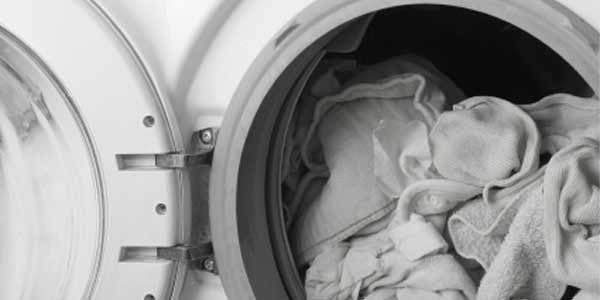
The Care and Keeping of Your Cloth Diapers
Properly caring for your cloth diapers is a key step in keeping them usable for years to come. There are many common cloth diaper washing mistakes that are made all too often and can quickly destroy your precious stash. Therefore, before you ever even take your diapers out of their original packaging, it is a good idea to do some research on your particular type of diapers and the correct way to care for them.
In this article we will cover some of the most common cloth diaper care mistakes, as well as the proper way to care for your setup so you can move forward with your diapering journey with confidence.
Of course, if you are ever unsure about anything, it is a good idea to refer back to the manufacturers of your diaper. However, this is a good basic guide to begin with.
Pre-Wash
When you get a brand-new diaper, it is important to run it through the wash on the hot setting—once or twice if it is of synthetic material, and 3–6 times it it’s made of natural fibers—before using it. This removes any residual chemicals that may be left behind, which not only helps it improve absorbency, but is also more sanitary in general.
Spray Them Down
Unless your baby is exclusively breastfed, it is important to remove all solid waste from your diapers before putting them in the wash. To do this, you can choose to use a dedicated diaper scraper and scrape waste into the toilet, or use diaper liners and simply dump the liner and waste into the toilet together.
Whichever way you go, you will also want to use a diaper sprayer. This handy gadget attaches to your toilet and sprays a stream of water on your diaper to help you rid it of any waste left behind after scraping or dumping. Alternatively, you can choose to use the diaper sprayer alone, allowing that strong stream of water to do all the work.
Skip the Bucket
Some people believe dirty diapers should be stored in a "wet pail", i.e. a pail filled with water and sometimes bleach. However, wet pail storage is a bad idea for a few reasons.
For one thing, the constant soaking causes your diapers to wear out more quickly than they would if stored dry. Wet pails are also the perfect breeding ground for bacteria and a health and safety hazard to babies, young children, and pets.
Instead of a wet pail, a wet bag or diaper pail should be used to store dirty diapers awaiting wash time. Both wet bags and wet pails keep smells in, while still allowing air to flow into the diapers, avoiding any potential problems with mold. Dirty diapers should be washed every 24–48 hours to avoid problems with stink.
Rinse First
Before running your regular wash cycle, run a quick rinse cycle to remove any urine from your diapers. This will ensure you aren't washing your diapers in a tub full of old urine, which would be pretty pointless and gross.
Use Enough Additive-Free Detergent
Many people recommend using only natural detergents on cloth diapers. While this is unnecessary, it is still important that you use an additive-free detergent in order to avoid irritation and build-up.
While the best cloth diaper detergent for you may be different from the detergent your neighbor prefers, there are a few detergents that are recommended on a regular basis. These include: Country Save, Charlie’s Soap, Tide Free, All Free and Clear, and Rockin’ Green, among others.
Whichever one you choose, be sure to use the full recommended amount. Some cloth users may recommend using only a fraction of the detergent company’s recommended amount. This will almost certainly cause your diapers to accumulate build-up. Therefore, instead of using less cleaning agent, add an extra rinse cycle to get rid of any soap that may remain in the diapers after the regular wash cycle.
Wash on Hot
When washing your diapers, set the dial to warm or hot. After doing this, there is nothing special you need to do. Simply let the cycle run its course, and remember to run that extra rinse cycle at the end.
Line Dry
Hot dryers are not good for PUL (polyurethane laminate) covers, and can quickly cause delamination. They can also wear holes in prefolds, flats, and inserts, causing them to be useless.
Instead of subjecting your diapers to a hot trip through the dryer every time they are washed, hang them outside to dry. This is easier on the fabrics and the sun helps to remove tough stains and sanitize the diapers.
Bleach Sparingly
Back in the day, people bleached their diapers on a regular basis. However, with the dawn of newer styles of diapers, many people took to believing that bleach is a big no-no in anyone's cloth diaper care routine.
While bleach shouldn't be used in every wash, it is actually a great way to sanitize diapers and rid them of the stinky build-up that tends to occur. It is also the only way to truly rid your diapers of yeast, and should be used immediately if your baby is battling a yeast infection.
The trick to using bleach in your diaper wash is to use a very small amount (¼ cup or less) on already cleaned diapers, and rinse two to three times after the wash cycle. This will ensure your diapers stay free of build-up without leaving behind chemicals that can irritate baby's bum.
Strip Occasionally
Diapers may occasionally accumulate a stinky build-up that, over time, will begin to put off an ammonia odor. If you find that your monthly bleach wash isn't enough to keep your diapers free of the stinkies, you might need to begin washing with a bit more detergent, but before that, you might need to strip them.
Stripping involves washing your diapers by hand in Dawn dish soap and hot water, and rinsing them well before running them through a regular wash cycle. This will remove any oil and diaper cream build-up left behind on your diapers.
Conclusion
While all of this information may seem like a lot to take in, caring for cloth diapers is actually quite simple and well worth the trade-off when you consider all the benefits of using cloth.
Take your time, figure out a routine, and enjoy all the many great things you’ll get out of using cloth diapers on your baby!
- Kevin Thill
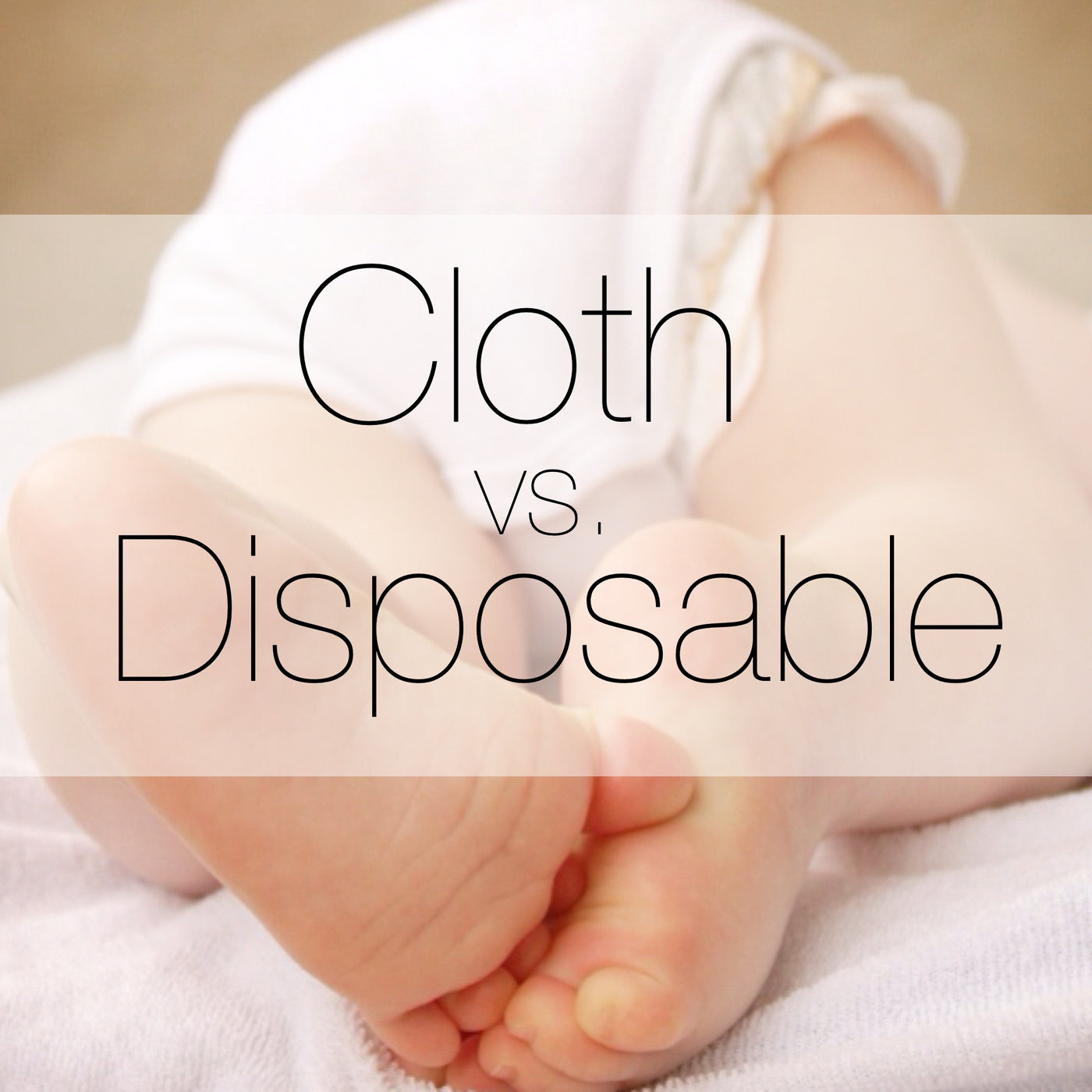
Changing Diapers: 6 Reasons to Switch to Cloth
Each day, more new mommas and daddies join the ranks of cloth-diapering parents. Scouring the internet to find adorable prints and visiting local cloth diaper stores to search for a particular cover color have become new parenting pastimes, and even baby registries aren’t safe from this wave of interest in cloth diapering. What was once a mundane, everyday thing—and the only way to effectively diaper a baby—cloth diapering is making a strong comeback that includes some awesome new twists and improvements.In this article we will explore some of the positive things about cloth diapers, point out improvements that have been made to them, and discuss reasons why we believe everyone should give them a try. Who knows? Maybe by the end of this short read you'll be ready to ditch the disposables and join the cloth diaper club yourself!
Eco-Friendliness
One of the best reasons to choose cloth has to do with the bigger picture. All disposable diapers are landfill-bound, and most are destined to sit in those landfills for a very long time before they finally decompose. Cloth diapers, on the other hand, are washed and used time and time again, reducing the amount of waste we send to landfills.
Additionally, prefolds, flats, and inserts that have seen better days can still be used as cleaning rags, and most cotton diapers can be added to compost bins after that, meaning they never have to see a landfill at all.
Safety
Many disposable diapers contain a cocktail of chemicals that have been said to cause chemical burns and could potentially cause such issues as cancer, asthma, and infertility later in life. Because so many of these issues occur much later in life, it is hard to pin disposable diapers as the cause for any one person's health problems. However, having such harsh chemicals so near your baby's most sensitive skin can definitely feel like a gamble.
Meanwhile, pre-washed and well-cared-for cloth diapers contain no chemicals. This means you can rest easy knowing your little one's bottom won't be burned or irritated, and their health will not be affected by those chemicals so commonly found in disposable diapers.
Ease of Use
Once upon a time, keeping diapers clean and ready for a tiny baby bottom was a difficult and unappealing task. On top of that, diapers almost always had to be pinned on—not an easy task when baby is squirming—and covers that kept the diaper from leaking were often uncomfortable and didn't breath well, if at all. This led to the invention and enormous popularity of disposable diapers.
However, with the dawn of diaper sprayers, more efficient washing machines, and effective-yet-gentle detergents, caring for a batch of cloth diapers is now easier than ever. All-in-one and pocket diapers add to the appeal with their ease of use, and even diaper covers have improved to include snaps or hook-and-loop closures and better air flow for baby.
Certainly, cloth diapering a baby is easier than ever. In fact, it’s become so easy that even some reluctant grandparents and busy daycare providers are willing to give it a try.
Value
The average American parent spends $550 on disposable diapers in the first year of their baby's life. A one-size cloth diaper stash, on the other hand, can be purchased for less than $300, can easily last until your child is potty training, and if properly cared for, will likely be used for another kid or two after that.
Won't be having any more babies? No worries! You can resell your diapers locally or online. For diapers in excellent condition you can expect to make back 50–75% of your original purchase price. This reduces your diapering expenses even more, making cloth diapering the obvious choice for single-parent families, budget-conscious parents, and anyone else looking to save a buck or two.
Comfort
Soft bums deserve soft diapers. Your baby is in diapers the majority of the day, so soft, breathable, and comfortable diapers are an important part of your little one's tiny wardrobe.
Cloth diapers come in a variety of soft, breathable fabrics, and many are designed to wick moisture away from the skin. This means you can choose what you feel is best for baby with the knowledge that whatever you choose, they will be nice and comfy, and will likely avoid the diaper rashes that so many sweet babes suffer through.
Cute Factor
It's no secret that cloth diapers are adorable. From mustaches to owls, the prints found on cloth diapers today are as varied, colorful, and fun as they can get. Many cloth-diapering parents love to see those fluffy bums so much they don't even bother with pants, and it really isn't hard to see why. While diaper changes will always be a bit of a chore, cloth diapers can definitely take the edge off with their adorable prints and bright colors. Digging through the drawer to find the perfect print for your child's bottom is oddly satisfying, and seeing your little one in their sweet fluff is even more so.
As you can see, there are many reasons to switch from disposable diapers to cloth. Even if only one or two of the reasons listed above are important to you, cloth diapers are worth a try.
Whether you are a health-conscious daddy looking to give your child the healthiest start possible, or a budget-conscious mommy hoping to save a buck or two, cloth diapers can help you out, and all the added benefits are just icing on the cake.
- Kevin Thill
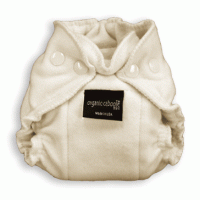
Using Organic Cloth Diapers
If you use cloth diapers, you already know how much more environmentally friendly they are than synthetic disposable diapers. Not only are you saving the raw materials needed to make these one-use-only diapers, but you’re keeping a lot of non-biodegradable material out of landfills. Aside from that,- Kevin Thill
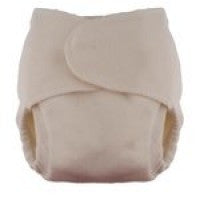
Using Cloth Diapers and a Diaper Sprayer
If you’ve decided to use cloth diapers for your newborn baby, you already know that the biggest challenge is keeping them cleaned and ready. Your first instinct when dealing with soiled cloth diapers is to wash them in your sink; unfortunately, sink-washing your diapers lets their contents- Kevin Thill
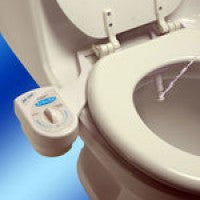
When Will Bidets Catch On in America?
In recent years, the use of bidets has increased all over the world, but it is found in few bathrooms all over America. In fact, Americans have a reputation for using huge amounts of toilet paper – according to business research company Euromonitor, the U.S. as a- Kevin Thill